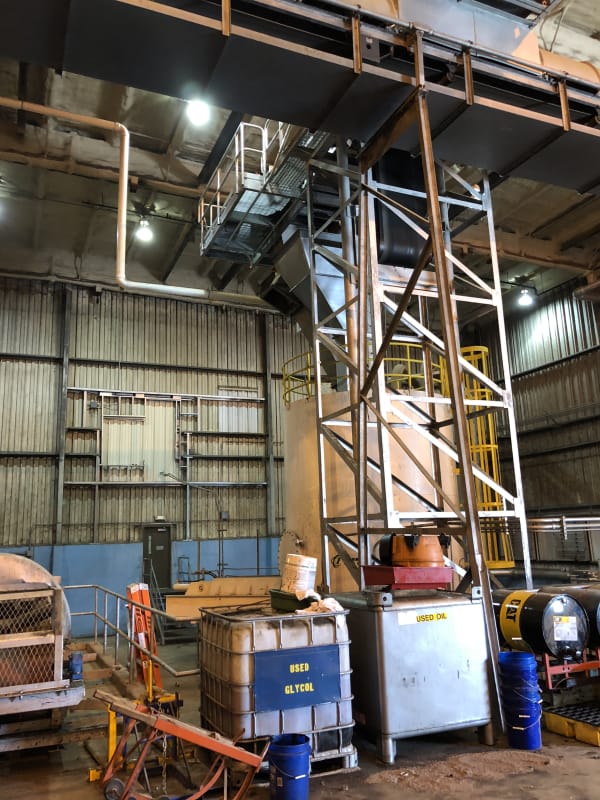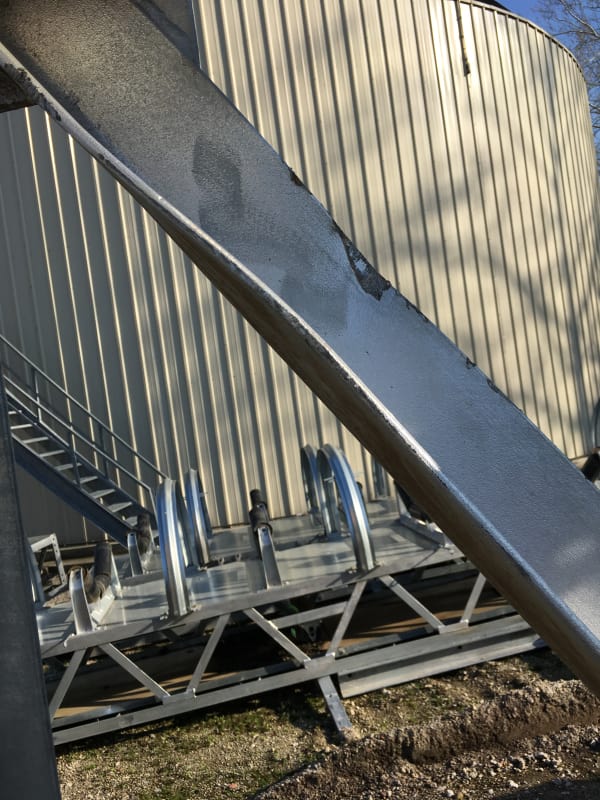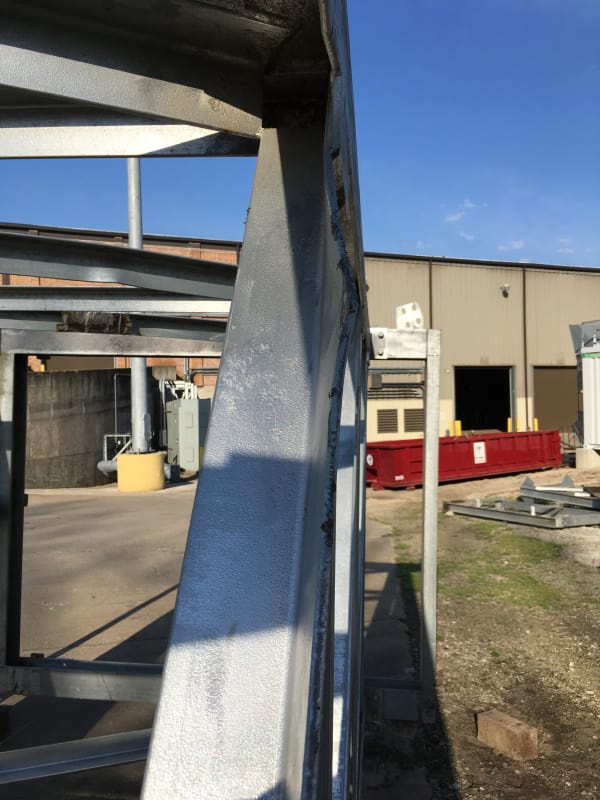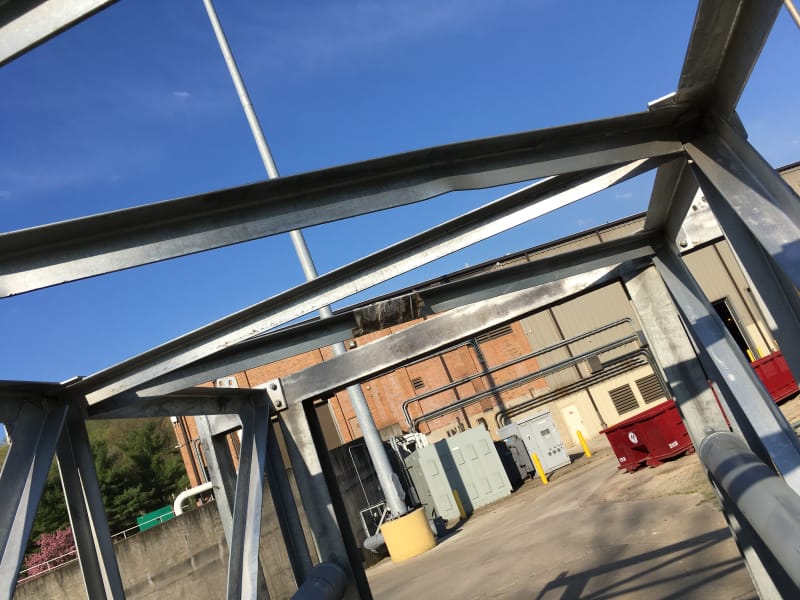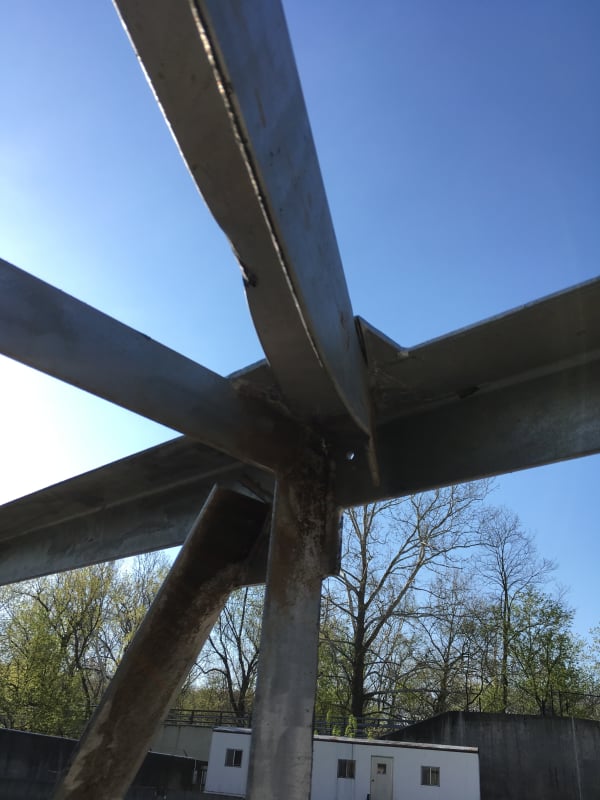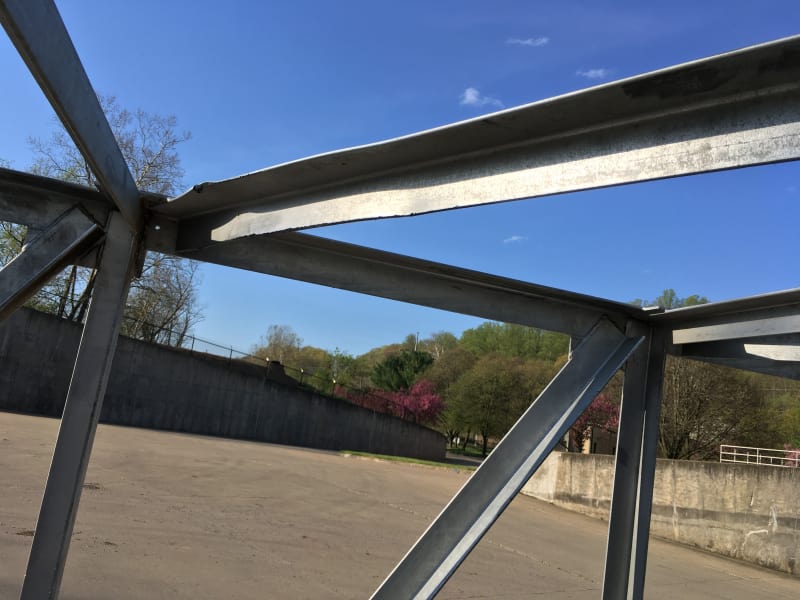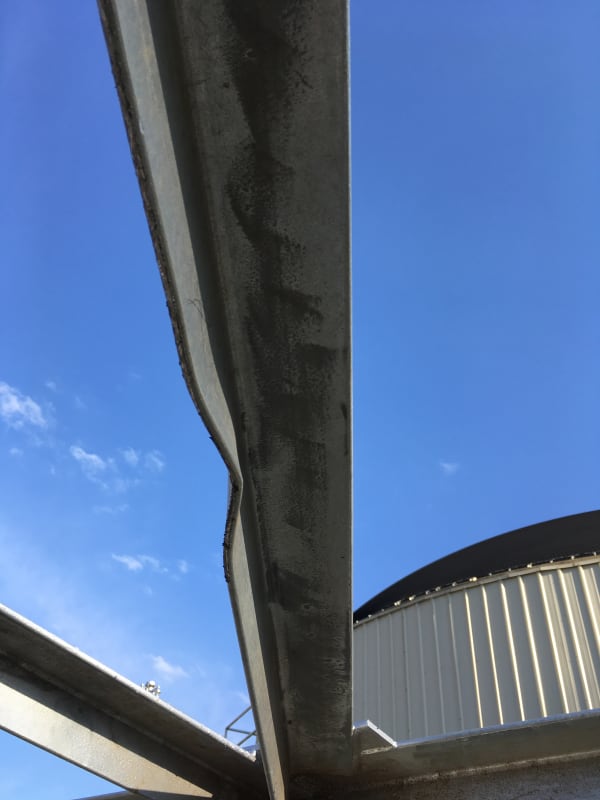Navigation
Install the app
How to install the app on iOS
Follow along with the video below to see how to install our site as a web app on your home screen.
Note: This feature may not be available in some browsers.
More options
Style variation
-
Congratulations cowski on being selected by the Eng-Tips community for having the most helpful posts in the forums last week. Way to Go!
You are using an out of date browser. It may not display this or other websites correctly.
You should upgrade or use an alternative browser.
You should upgrade or use an alternative browser.
Bent conveyor support diagonal members from lifting 1
- Thread starter USAeng
- Start date
- Status
- Not open for further replies.
- Thread starter
- #2
SlideRuleEra
Structural
If "anything" bad ever happens in the future, the conclusion (right or wrong) will be that leaving as-is was negligence. Besides, it looks like some of the welds were damaged. Since rewelding should be performed, I would install replacements members.
![[idea] [idea] [idea]](/data/assets/smilies/idea.gif)
![[r2d2] [r2d2] [r2d2]](/data/assets/smilies/r2d2.gif)
![[idea] [idea] [idea]](/data/assets/smilies/idea.gif)
![[r2d2] [r2d2] [r2d2]](/data/assets/smilies/r2d2.gif)
In some cases, diagonal bracing can be designed as tension-only members, and local flange dings likely wouldn't reduce the tensile strength.
I would think some of those spots could be repaired by cutting out small areas of the angle rather than replacing the whole angle. Or possibly using heat and applied force to straighten what's there.
I would think some of those spots could be repaired by cutting out small areas of the angle rather than replacing the whole angle. Or possibly using heat and applied force to straighten what's there.
My $.02:
1) Based on the pictures, those diagonals are both tension and compression
2) What's your relationship to the situation? Are you the owner, owner's engineer, engineer for the conveyor company, or engineer for the company that provided the supports?
3) The owner is buying a new system, which includes the support. If you were buying something new, would you accept it in a "not-pristine" condition? What kind of additional warranty would you want before taking possession? As SRE mentioned, some of the welds may have been damaged. Who's going to own the welds in their current state?
Especially because it's brand new, I would have the damaged members replaced, at a minimum. Due to the HDG, I could probably make a strong argument for having a new support constructed (depending on the actual corrosion mitigation needs coupled with the labor for welding HDG), though time-constraints may over-rule that idea.
1) Based on the pictures, those diagonals are both tension and compression
2) What's your relationship to the situation? Are you the owner, owner's engineer, engineer for the conveyor company, or engineer for the company that provided the supports?
3) The owner is buying a new system, which includes the support. If you were buying something new, would you accept it in a "not-pristine" condition? What kind of additional warranty would you want before taking possession? As SRE mentioned, some of the welds may have been damaged. Who's going to own the welds in their current state?
Especially because it's brand new, I would have the damaged members replaced, at a minimum. Due to the HDG, I could probably make a strong argument for having a new support constructed (depending on the actual corrosion mitigation needs coupled with the labor for welding HDG), though time-constraints may over-rule that idea.
- Thread starter
- #6
-
1
- #8
USAeng:
Well..., at least you know who to blame, and who to sue when things start going south. I would think that most of that damage can be fixed with a little engineering imagination, judgement and experience. It will take a little structural analysis and understanding of how the various members function in the structure, and under what loads, etc., but since it is being repurposed, in house, most of that should already have been done. Some gentle straightening with a hammer, a come-along or a hydraulic jack, maybe a little heat would certainly be in order. Examine the member, welds and joints for ripping which could grow or reduce cap’y. If they are tension members you don’t want to have reduced the net area or allowed a nick/ripped area which can rupture under a tensile loading. If they are compression members the primary concern is slenderness, stiffness and the potential of column type buckling. In both cases a reinforcing angle added over the existing angle would normally be enough. Grind the corners so you get good fit-up and weld the two together. If the material is HDG you would have some welding problems, and the people doing the work should know what they are doing and do quality work, not just be able to melt welding rods. You might want to talk with your local fabricator who could supply the material, and send the right equipment and a qualified crew out for a day or so.
Well..., at least you know who to blame, and who to sue when things start going south. I would think that most of that damage can be fixed with a little engineering imagination, judgement and experience. It will take a little structural analysis and understanding of how the various members function in the structure, and under what loads, etc., but since it is being repurposed, in house, most of that should already have been done. Some gentle straightening with a hammer, a come-along or a hydraulic jack, maybe a little heat would certainly be in order. Examine the member, welds and joints for ripping which could grow or reduce cap’y. If they are tension members you don’t want to have reduced the net area or allowed a nick/ripped area which can rupture under a tensile loading. If they are compression members the primary concern is slenderness, stiffness and the potential of column type buckling. In both cases a reinforcing angle added over the existing angle would normally be enough. Grind the corners so you get good fit-up and weld the two together. If the material is HDG you would have some welding problems, and the people doing the work should know what they are doing and do quality work, not just be able to melt welding rods. You might want to talk with your local fabricator who could supply the material, and send the right equipment and a qualified crew out for a day or so.
- Status
- Not open for further replies.
Similar threads
- Question
- Replies
- 1
- Views
- 5K
- Question
- Replies
- 3
- Views
- 2K
- Replies
- 29
- Views
- 5K
- Replies
- 10
- Views
- 4K
- Locked
- Question
- Replies
- 6
- Views
- 801

